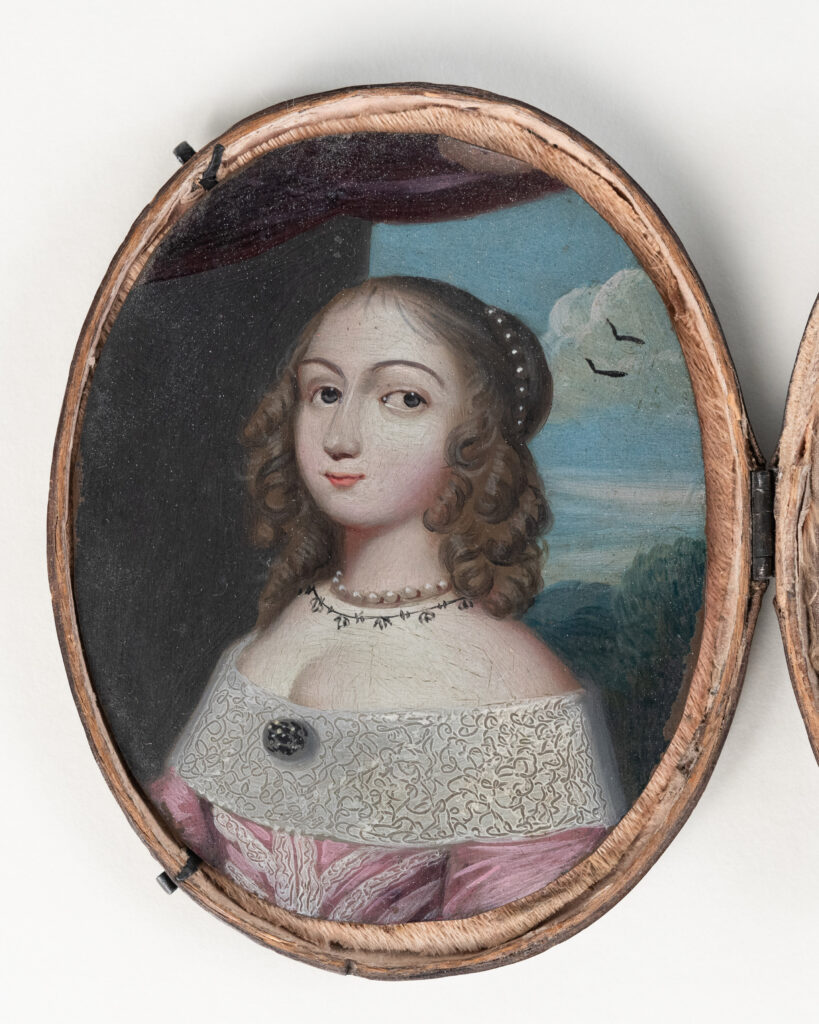The Art of Transformation

This precious leather-covered case reveals a surprise from the 17th century. It shows the portrait of a young girl accompanied by 16 thin strips of painted mica that, through superposition, transform her into a fantasy figure – perhaps from Antwerp or else, English. There she is as a nun, a queen, a moustachioed man and so forth.


From the 1640s onwards, there were workshops in Flanders that produced these rare objects in multiples. This fragile courtly object is similar to the oval boxes decorated with a miniature of a loved one held at the waist by ribbons, alongside small mirrors or watches. In some cases, they were political in nature. Here, the play on identity is hidden, and reminiscent of black velvet or fans pierced with eyeholes that were used to conceal the face. Except in this case, the modification of gender or social rank is even more subversive. The era was certainly one of great feminine figures: Anne of Austria is regent; Christine is Queen of Sweden, “strong” or illustrious women from history are represented, as in the case of La Meilleraye at the Arsenal, while the Frondeuses and Précieuses held regular salons. Paradoxically, however, they were mocked for their inconstancy and deception, as well as their unstable moods due to the moon. Like Pascal, they denounce the tricks of the “village queens”, which can be seen in one of the misogynistic engravings. Imagine a letter regarding beautiful women stating that “the only appearance is the perfection of a sex full of make-up”.


This play on transformation, well known in Paris, is thus similar to a very fashionable motto from the time. It was evoked by Mlle de Montpensier in 1658 to illustrate the proverb “qu’a belles gens tout sied bien” (beautiful people all look good). Ultimately, beauty and youth triumph whatever the mask given by Fortune.
By David Simonneau, assistant curator in the graphic arts department of the Musée Carnavalet – Histoire de Paris.



